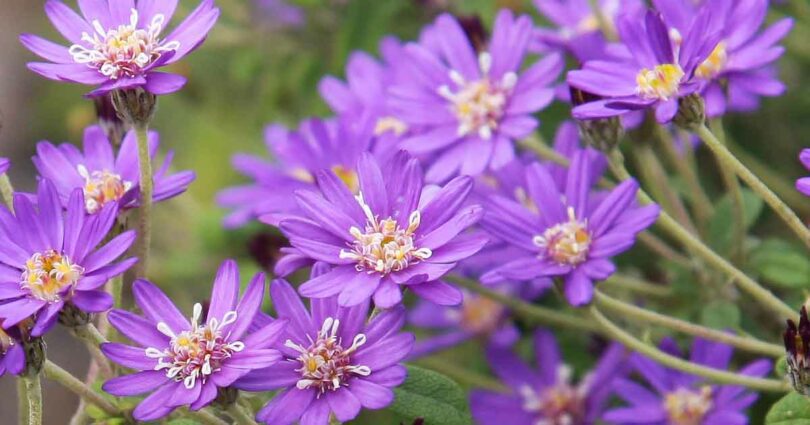Dusty Daisy Bush
Olearia phlogopappa is perhaps the most widely grown of all of the Australian olearia species. This is a small shrub found in Victoria, Tasmania and into New South Wales.

Flower colour ranges from white through to pinks and mauve, and flowering time is from spring right through until late summer. So with round 5 months of flowers, it makes a valuable addition to the garden.
Sometimes called the Dusty Daisy Bush, although easier to find under its proper name. A named variety ‘White Gem’ is available although we do prefer the vibrant colours of the mauve varieties sometimes known as ‘Blue Gem’
How to grow Olearia phlogopappa
This is a species that prefers a moist well drained soil, think of an open area in a forest with some moisture.
It is frost tolerant and will grow in full sun, but best with some protection from the heat of the afternoon sun.
- Choose a position in good morning sun with some light or dapples afternoon shade.
- Plant in a humus rich well drained neural to slightly alkaline soil.
- Water in well when first planting.
- Much lightly around the plant.
- A little extra water during the establishment period may be required.
Pruning
You should prune the plant after flowering to encourage bushy habit and more flowers.
Hard pruning can be carried out if needed.
